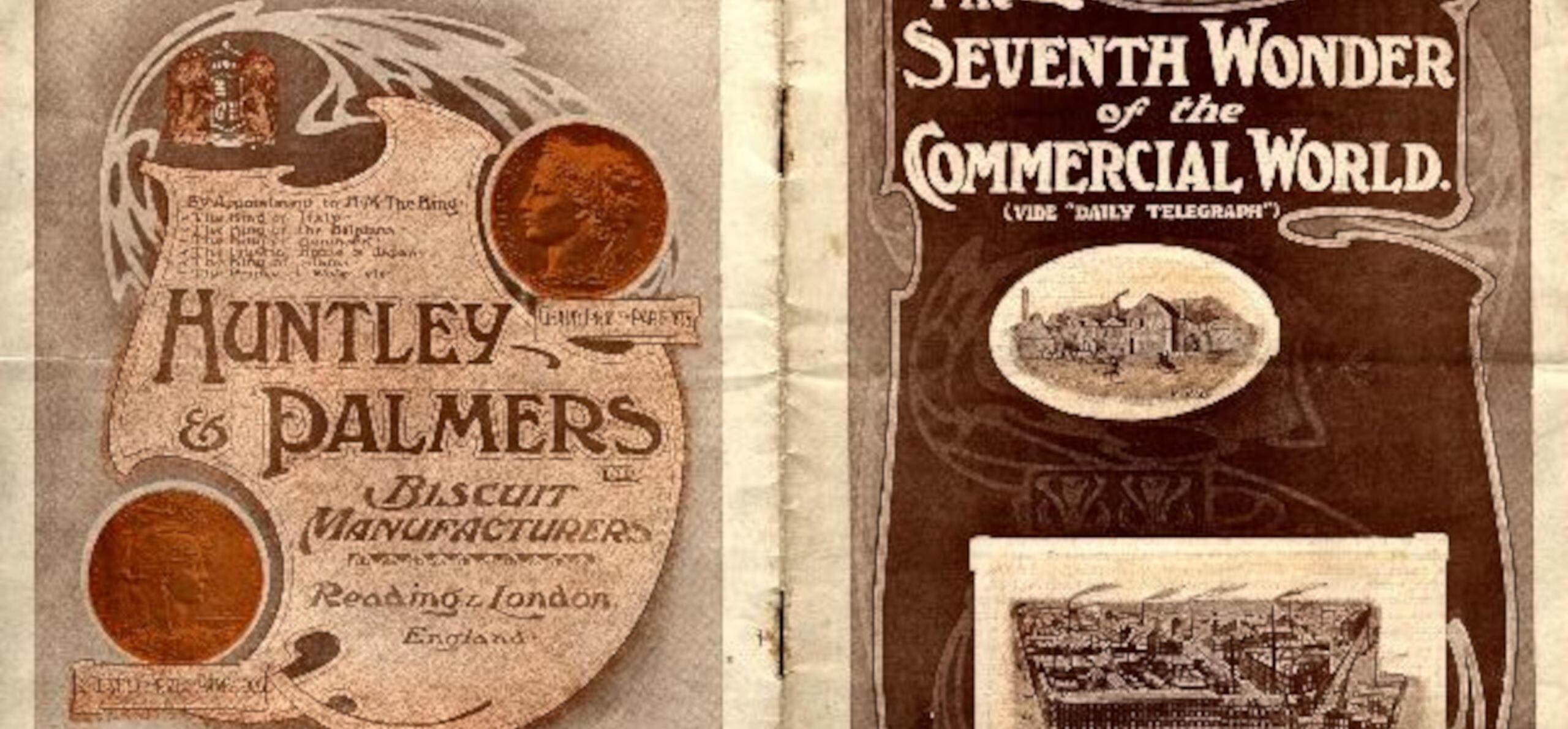Throughout the nineteenth century Huntley & Palmers adjusted prices almost entirely according to changes in the cost of ingredients, mainly that of flour, which accounted for over a third of total costs. Since demand remained buoyant the economic justification for the price cuts was limited but, as a good Quaker, George Palmer felt bound to pass on savings in costs to the customer. In 1849 Pic Nic biscuits were sold for 7d a pound and Ginger Nuts and Albert biscuits were 8d a pound.
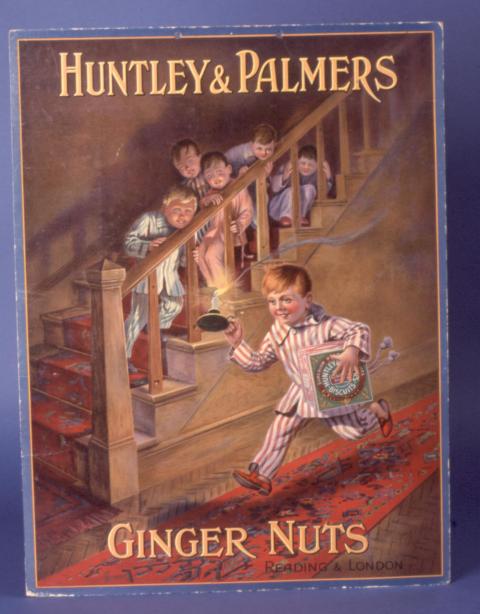
Ginger Nuts were the top-selling variety in the early twentieth century. This advert pre-dates the product's re-launch in 1933 when the John Ginger character was introduced to market the Ginger Nuts variety. (REDMG : 1997.130.563)
Afternoon Tea
In 1860 Huntley & Palmers produced 3200 tons of biscuits per year. However demand was to soar over the next few decades as the nations feeding habits changed from having a late breakfast and early evening dinner to taking a smaller breakfast, hot lunches and late dinner. This led to the custom of afternoon tea and by the 1880s restaurants and tea-shops were springing up in most towns.
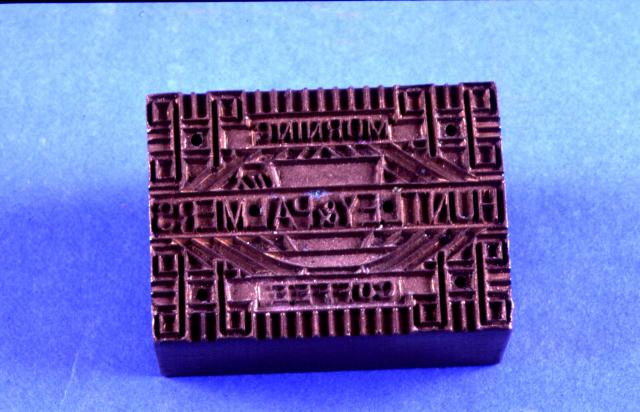
This 'Morning Coffee Huntley & Palmers' stamp was probably produced in late 1939 for a special Christmas tin of Morning Coffee or later in the 1960s when this variety was re-introduced. (REDMG : 1997.130.505)
Travellers Snacks
The growth of long-distance train journeys also led to an increasing demand for biscuits, which Huntley & Palmers used to their advantage. Every first class passenger departing from Paddington was handed a small packet of biscuits in a neat wrapper, with instructions to look out for their red-brick factory at Reading.
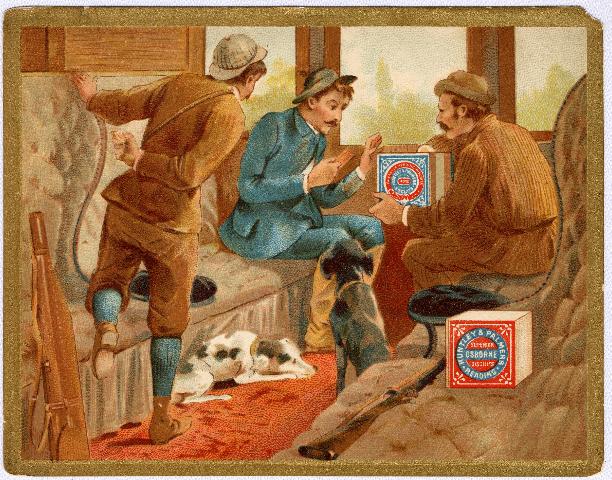
This small 1890s advertisement is from a series of cards that illustrated how Huntley & Palmers biscuits reached the four corners of the globe. Biscuits packed in tins were an ideal travel snack. (REDMG : 1997.82.367a)
Catering for all tastes
By the late 1860s the firm's hundred or so biscuit varieties catered for all tastes of those who could afford them. At the really luxurious end of the scale came the fancy Rout Cakes - these cost 2s per lb. Lemon and Orange Dessert and Raspberry Biscuits, Queen's Drops and Ratafias all sold for over a shilling a pound. More modestly priced biscuits included the Ginger Nut, Osborne, Abernethy, Digestive, Excursion, Gem, Nic-Nac and Tourist.
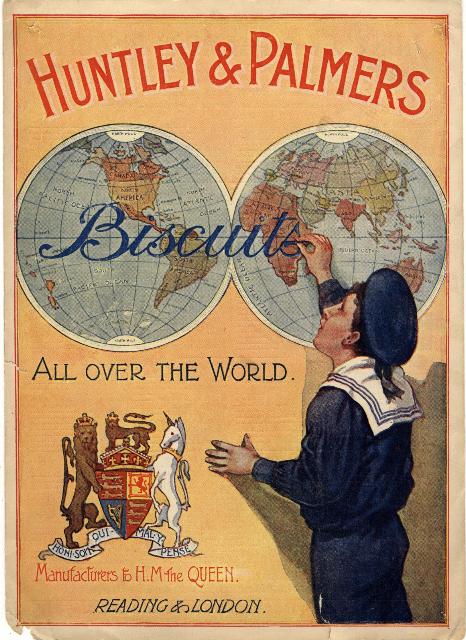
The reverse of this advert lists the variety of H&P biscuits by 1900, split into Plain (eg the Cuddy and Reading Crackers), Sweet (eg Almond Rings and Opera Wafers) and Slightly Sweetened (eg Fancy Shortbread and Tourist). (REDMG : 1997.82.186)
Other biscuits manufacturers
The unstoppable demand for biscuits led to the growth in the number of Huntley & Palmers varieties to over 400 by the turn of the century. This caused a sharp rise in production costs and other firms were beginning to make inroads into the British market. Jacobs, originally from Ireland, introduced the Cream Cracker in 1885 and the firm of McVities was started in Edinburgh at this time.
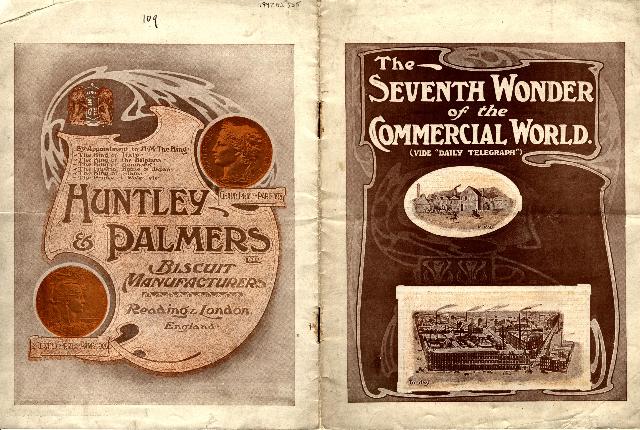
This booklet from around 1910 was a reprint of an article on Huntley & Palmers and Reading that appeared in the Illustrated London News. 'The Seventh Wonder of the Commercial World' was coined by the Daily Telegraph. (REDMG : 1997.82.535)
Huntley & Palmers grew famous not just because of the quality of their biscuits, but because of the effectiveness of their advertising and marketing. Read on to find out more about Huntley & Palmers' advertising.
